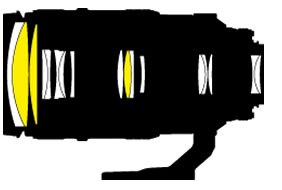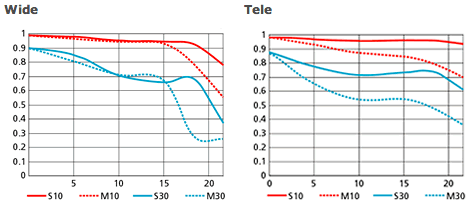Here is a quick comparison between the old and new Nikkor AF 80-400mm f/4.5-5.6 lenses based on the specifications listed on Nikon’s website:
 |  | |
 |  | |
| Nikkor lens | AF 80-400mm f/4.5-5.6D ED VR | AF-S 80-400mm f/4.5-5.6G ED VR |
| Focal Length Range | 80-400mm | 80-400mm |
| Zoom Ratio | 5x | 5x |
| Max Aperture | f/4.5-5.6 | f/4.5-5.6 |
| Min Aperture | f/32 | f/32-40 |
| Max Angle of View (DX) | 20° | 20° |
| Min Angle of View (DX | 4° | 4° |
| Max Angle of View (FX) | 30°10′ | 30°10′ |
| Min Angle of View (FX) | 6°10′ | 6°10′ |
| Max Reproduction Ratio | 0.42x | 0.2x |
| Lens Elements | 17 | 20 |
| Lens Groups | 11 | 12 |
| Compatible Format(s) | FX DX FX in DX Crop Mode 35mm Film | FX DX FX in DX Crop Mode 35mm Film |
| Vibration Reduction | Yes | Yes |
| Diaphragm Blades | 9 | 9 |
| Nano Crystal Coat | — | Yes |
| ED Glass Elements | 3 | 4 |
| Aspherical Elements | — | — |
| Super Integrated Coating | Yes | Yes |
| AF-S (Silent Wave Motor) | — | Yes |
| Internal Focusing | — | Yes |
| Minimum Focus Distance | 7.5ft.(2.3m) | 5.74ft.(1.75m) |
| Close Range Correction | — | — |
| Focus Mode | Auto Manual | Auto Manual Auto/Manual |
| Rear Focusing | — | — |
| Filter Size | 77mm | 77mm |
| Accepts Filter Type | Screw-on | Screw-on |
| Teleconverter Use | no (source) | yes |
| Dimensions | 3.6×6.7in. (Diameter x Length) 91x171mm (Diameter x Length) | 3.8×8.0in. (Diameter x Length) 95.5x203mm (Diameter x Length) |
| Weight | 47oz.(1360g) | 56oz.(1570g) incl. tripod collar |
| Price | $1,348 after rebate | $2,696.95 |
The interesting part comes when we compare the MTF chart with other Nikon lenses with a similar focal length range – the new Nikkor AF-S 80-400mm f/4.5-5.6G has a very good (if not the best) MTF diagram:
Update – How to read the MTF chart from Nikon’s website:
MTF (Modulation Transfer Function) is one of the measurements that evaluate a lens’ performance; it shows contrast reproducibility of the lens using characteristic spatial frequencies. Spatial frequencies indicate the number of lines per mm.
In the MTF chart of this website, the horizontal axis is in millimeters and shows the distance from the center of the image toward the edges, and contrast value (highest value is 1) is shown in the vertical axis, with fixed spatial frequencies of 10 lines/mm and 30 lines/mm.
The MTF chart for each lens is based on the value at the maximum aperture of the lens; the red line shows the spatial frequency of 10 lines/mm and the blue line, 30 lines/mm.
In the off-axis field, contrast reproducibility of the lens for sagittal direction and meridional direction varies with astigmatic affection. The path of 10 lines/mm indicates the contrast reproducibility of the lens (the higher and straighter is better). The higher and straighter the 30 lines/mm-path is, the higher the resolution of the lens.
Note that the lens performance can not be measured only with MTF chart. Softening or blurring of color also governs measurement.












